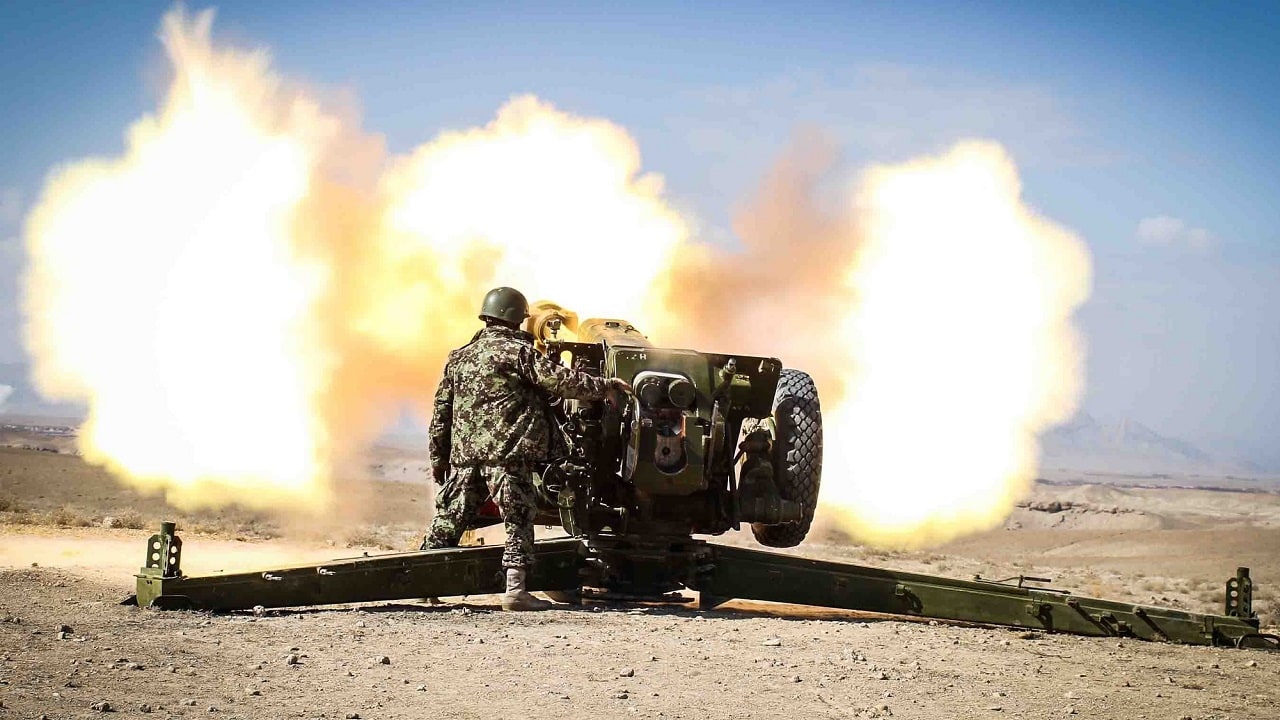Artillery Gun War in Ukraine: Earlier this week, the British Telegraph newspaper compared the frontlines of Bakhumut, in the Donetsk Oblast of Ukraine, to the Battle of Passchendaele – also known as the Third Battle of Ypres – the scene of some of the most horrific fighting of the First World War.
Nothing but shattered trees and mud could be seen from the mud-soaked trench lines in Ukraine, a situation not all that different from the battle that was fought in 1917, the newspaper reported.
Even the slug match of artillery is much the same.
The fighting in Ukraine has seen a resurgence of the “big guns,” which once were called the king of battle.
Both sides now employ artillery of various sorts – including howitzers and multiple rocket launchers (MRLs) – to pound the enemy lines.
With this constant shelling have come a number of problems. Both sides have depleted their respective stockpiles of ordnance.
Over the summer Ukraine was using 5,000 to 6,000 artillery rounds a day and ran low on ammunition for its Soviet-era howitzers. The U.S. supplied some 142 M777 155mm guns, enough to outfit about eight battalions, along with NATO shells – but this fall, due to ordnance shortages, Kyiv has had to resort to the older 105mm guns as stockpiles of the 155mm rounds are replenished.
At least Ukraine was presented with options.
For the Russians, the problem was so great that Moscow had to turn to de facto ally North Korea and purchase vintage ordnance to keep its guns firing.
Artillery Guns Are Breaking Down
The World War II-vintage 105mm artillery guns that have been employed by Kyiv’s forces are still doing the job – at least until they don’t.
The guns simply can’t handle the thousands of rounds being fired daily, and the weapons are now burning out after months of overuse while others are damaged or destroyed by the Russian counterfire.
One issue has been that some of the 155mm rounds sent from other western powers, had not been tested for use in certain howitzers and have worn out the barrels more quickly.
Another issue with the M777 howitzers, The New York Times reported last week, is that the volume of shells being fired is taking its toll on guns that weren’t designed for such artillery slug matches.
The barrels were built largely with titanium, which is lighter than steel but is just as strong. That makes the artillery pieces easier to move, and quicker to set up – but the guns were designed to fire a small number of shells to support infantry in combat, not to engage in prolonged exchanges and artillery duels.
As a result, upwards of one-third of the roughly 350 Western-made howitzers donated to Kyiv are out of action at any given time.
The barrels – which are 20 feet long and weigh thousands of pounds – can’t be easily changed in the field. Instead, they must be sent to the rear to be repaired.
Some of the weapons are even being sent to a repair facility in Poland, which was set up by the Pentagon’s European Command.
“With every capability we give to Ukraine, and those our allies and partners provide, we work to ensure that they have the right maintenance sustainment packages to support those capabilities over time,” Lt. Cmdr. Daniel Day, a spokesperson for the U.S. European Command, said in a statement.
The efforts to keep the howitzers serviced will soon fall under a new command that will reportedly focus on training and equipping Ukrainian troops.
It could help Kyiv maintain momentum on the battlefield, even as its big guns are worn out.
A Senior Editor for 19FortyFive, Peter Suciu is a Michigan-based writer. He has contributed to more than four dozen magazines, newspapers, and websites with over 3,000 published pieces over a twenty-year career in journalism. He regularly writes about military hardware, firearms history, cybersecurity, and international affairs. Peter is also a Contributing Writer for Forbes and Clearance Jobs. You can follow him on Twitter: @PeterSuciu.
Want more 19FortyFive military, defense, and national security, as well as politics and economics analysis from the best experts on Earth? Follow us on Google News, Flipboard, YouTube, Facebook, Twitter, and Linkedin. Also, sign up for our newsletter here. You can also find our code of publishing ethics and standards here. Want to contact us? Email: [email protected].

